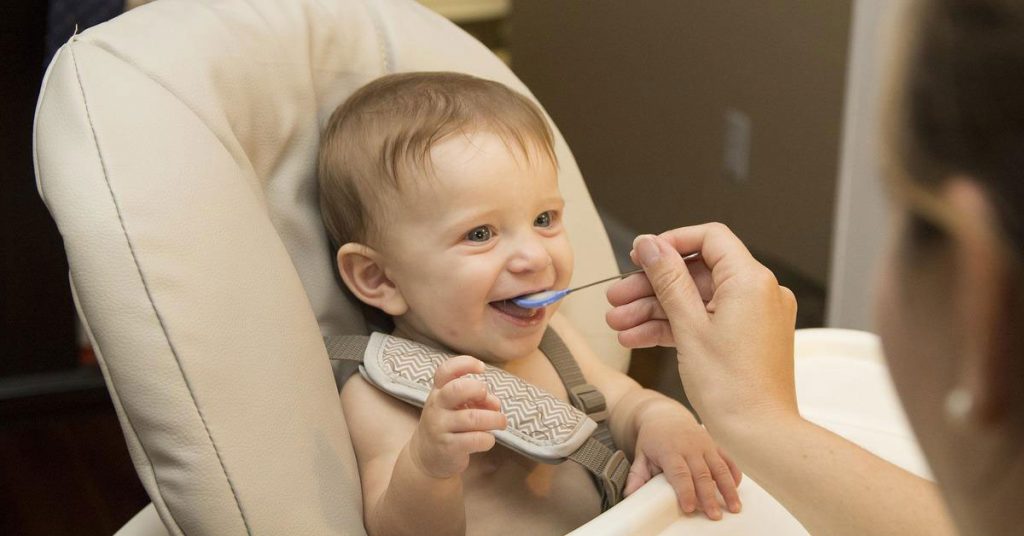Being on the go with a baby is not always straightforward, especially when feeding them. There are simple tips and strategies for feeding your child correctly and simply whether you are traveling by aircraft, vehicle, or train. Keeping your baby’s schedule and eating habits consistent so that he does not become disoriented is the most important thing. If you need assistance feeding your baby on the go, keep reading the essential guidelines for traveling with baby food.
These are some tips for traveling with baby food:
Bottle-feeding
While traveling, a bottle can store breast milk or formula for your infant. Ascertain that you have enough breast milk to last the entire vacation, or bring a breast milk pump just in case. If you are formula-feeding, the most convenient way to travel is to utilize ready-made formula in suitable cartons and disposable bottles. They are practical since they may be served at room temperature. If your infant likes warm milk, use a portable bottle warmer in your car, or ask a flight crew member for assistance heating a bottle if you’re traveling.
If you’re using a formula, make sure your brand is available where you’re going. You would like to travel as light as possible because the formula might be hefty. Ensure that everything is within easy reach. To make your life easier, pack a light day bag containing bottles, teats, towels, a spare nappy, and a change of baby clothes.

Reusable Food Bags
If your kid has already started solids, reusable baby food bags or pouches are the best baby food storage solution. Baby food pouches are ideal for traveling because they make feeding your child simple. Fill them with breastmilk, formula, or your baby’s favorite puree, toss them in your day bag, and take them out anytime your baby is hungry. Using reusable baby food pouches, you can make your baby food puree, so you know precisely what you are feeding your kid (no extra sugar or preservatives or confusing numbers). You will also save money by using reusable food pouches. You will not have to keep buying pre-filled pouches from the grocery store because each pouch may be washed and reused multiple times.
Before purchasing reusable baby food pouches, keep the following points in mind:
- The correct size – A single pouch should be large enough to feed your hungry infant.
- Make it easy to clean – The faster you can clean your baby’s feeding pouch, the more time you will have to do other things.
- Freezer friendly – If you want to make baby food in bulk and freeze it, a freezer-safe food pouch allows you to fill several food pouches and keep them in the freezer until needed.
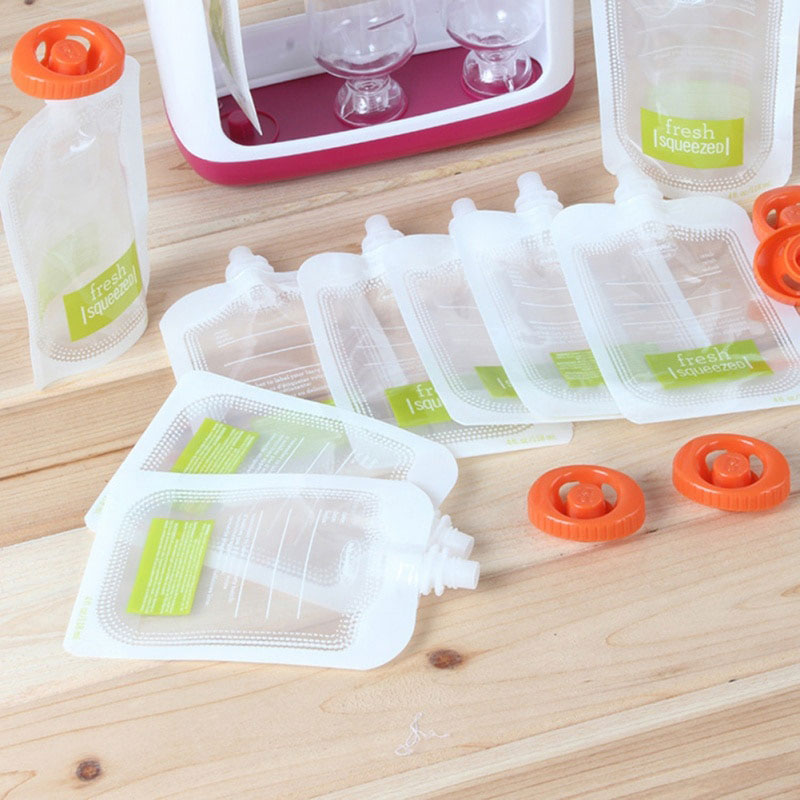
Lunch Box
Lunchboxes are useful for feeding your baby on the go more than simply lunch. They are a simple and convenient way to bring various snacks on field trips or excursions. Cool goodies for hot summer days should be packed in your Bento box. Take some frozen food from your freezer first thing in the morning. It will be defrosted and ready to consume by midday. Some models also offer a liquids compartment, allowing you to fulfill all of your needs in one convenient lunch box.
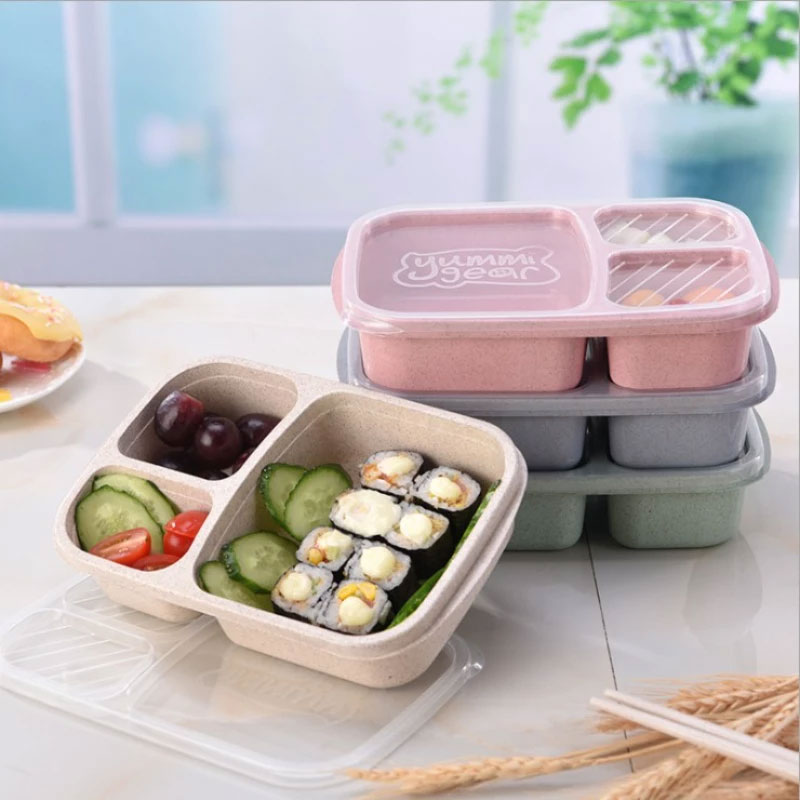
Glass Storage Containers
Glass jars and containers are great for transporting homemade baby food or any other form of food. Food stored under clear glass allows you to view what is within without removing the lids. This also helps to reduce food waste because leftovers can be easily checked before they spoil.
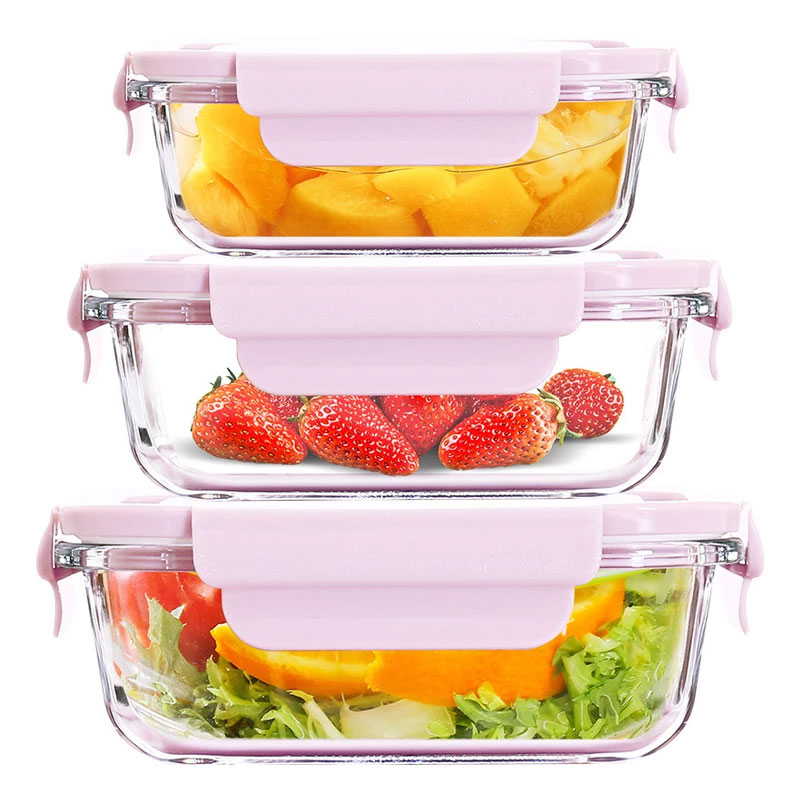
Plastic baby food storage containers
Plastics are energy efficient to make and lighter than alternative materials; they are better material for food packing than other options. They keep food fresh, 100 percent airtight, and leakproof. One of the essential points is that they are lightweight and convenient for travel. Therefore, people can easily use them while on the go. They are ideal for storing dry food for children, especially layered ones.
Layered Baby Food Storage Container
If you want to travel and are interested in a baby food storage container, we can suggest you as an example from one of them. You can see a picture of it below:
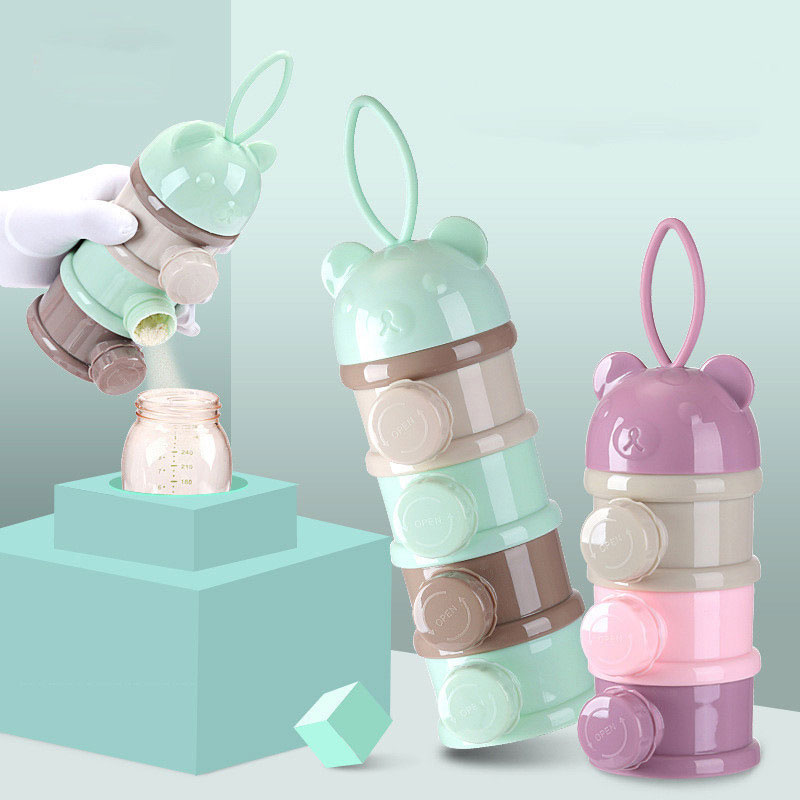
This container is made of polypropylene material, which is non-toxic and does not have any smell and is safe. It is made of a thick substance, making it difficult for your child to break. This display case has a convenient carry handle that makes feeding the children easier for mothers or anyone in charge of baby care. It can also be carried in a hand or a bag. It is ideal for when they go outdoors for any occasion or travel, as it is challenging to transport different types of food without one. Due to the difference in the design of the containers, it creates a lot of convenience for mothers or anyone. There are two types of this layered container: side-open and regular. To take the product from the lowest layer of the regular kind, it is necessary to take all the above layers. In the side-open type, there is no need for this. Unscrew the circle wrench.
The layered separation design provides good sealing performance, dustproof, moisture-proof, diverse functions, powerful storage, and eliminates item disorder.
You Need to Be Careful When Storing Baby Food!
The digestive and immunological systems of infants are underdeveloped, and they lack the same level of immunity as older children and adults. As a result, paying special attention to food safety and hygiene is essential when preparing and storing baby food. Food-borne infections are prevalent in Australia, affecting an estimated 4.1 million people per year. The symptoms are unpleasant, and they can be pretty severe for those who have a low immune system, such as youngsters under the age of five. Good food safety and hygiene procedures, on the other hand, can assist prevent this:
- Washing your hands is the most critical thing to keep food safe. Diaper change, feeding the dog, going to the restroom, and preparing raw meat or eggs expose your hands to hazardous germs and bacteria. After completing these duties, especially while making infant foods, always wash your hands.
- Any plastic bags that are swollen or leaking should be discarded.
- When traveling, transport milk and formula bottles in an insulated cooler with an ice pack to keep them cool (less than 41 degrees F).

